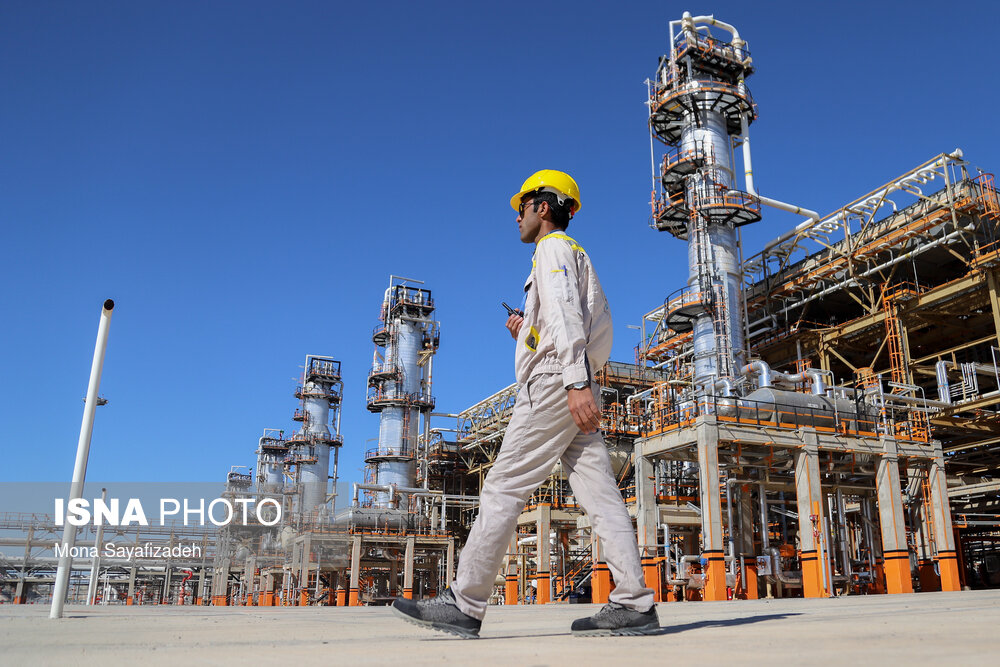Owji made the remarks in a meeting with members of the Iranian Parliament’s Energy Committee at the National Iranian Oil Company in Tehran.
Hailing the interaction between the Oil Ministry and the Parliament’s Energy Committee, the minister added the oil industry would not witness such achievements if the committee did not support it.
Elaborating on his ministry’s main jobs done over the past two years, Owji referred to an increase in investment, completion of semi-finished projects, and growth of oil, gas, refining and petrochemical production, which the minister said have activated these industries and motivated contractors and will certainly boost output and exports.
In 2022, 31 semi-finished projects worth $12 billion were completed, and 67 partially-finished others valued at $15.1 billion will become operational by mid-March 2024, he said, adding that the executive operations of 15 oil, gas, refining and petrochemical projects worth $14 billion will also start.
If the projects are implemented this year, 128,000 barrels of oil and 39 million cubic meters (mcm) of gas will be added to the country’s daily production while the capacity of transporting oil products will witness a 300,000-barrel increase per day, and the refining capacity, petrochemical production capacity, and gas transmission pipelines will develop, he continued.
The country’s gas production capacity will witness a 56 mcm increase and 70,000 barrels will be added to gas condensate output, added Owji, mentioning that Phase 11 of the South Pars (SP) gas field will become (officially) operational next week.
According to him, the average production in the South Pars Gas Field has increased by seven percent since the current government took over.
Launch of Phase 14, development of Phase 11, and installation of new pipeline of Phase 16 of the South Pars field will greatly help boost gas output, noted the minister.
Shifting to the collection of associated petroleum gas (APG), he stated all projects of gathering APG have been planned and associated gases of all fields will be collected by the end of the incumbent administration’s term.
Owji pointed to the recently inaugurated NGL 3200 plant in southwestern Iran, saying the NGL 3100 plant will also become operational by mid-March 2024.
He also touched upon the domestic petrochemical industry, expressing his satisfaction with the progress made and projects inaugurated in the sector.
In the refining sector, the minister continued, the country has made progress as gasoline output jumped 16 percent and 16 million liters of Euro-5 diesel fuel have been added to the output, and production of refineries’ feedstock has increased.
The construction of two megaprojects named Shahid Soleimani and Makran also started and have so far made good physical progress, he added.
Over the past two years, the Oil Ministry has promoted its cooperation with knowledge-based companies and universities, hiring 95 percent of university graduates, standing top in the productivity rankings, paying all gas debt to Turkmenistan, enforcing Article 10 of the Oil Law, and implementing the Oil Ministry’s plans on social responsibilities, he said.
Iran’s oil production did not exceed two million barrels per day (bpd) when the 13th (incumbent) administration took office, recalled the minister.
The country’s current crude oil production capacity stands at 3.8m bpd, and the report of the National Iranian Oil Company (NIOC) shows that the country is producing 3.2 million barrels of oil a day, stated Owji, adding the figure will rise to 3.4m bpd by the end of summer.
Brutal sanctions reduced Iran’s oil exports and revenues, and the government faced hard currency deficit, which should be made up by the Oil Ministry according to the 2021 Budget Law, he continued.
The minister pointed to a huge energy imbalance, particularly in the gas sector and during winter 2021, electricity blackouts in winter 2020, and sharply-reduced reserve capacity of power plants as other challenges his ministry faced.
Some 87 million barrels of gas condensates in storage offshore and Iran’s condensate funds frozen in South Korea (due to US sanctions) were the other problems, he added.
Now, Iran’s oil and gas condensate exports have doubled as the country’s liquefied petroleum gas (LPG) exports in 2022 and oil and condensate exports in the first five months of the current Iranian calendar year (March 21-August 22, 2023) have witnessed 21 and 60 percent increases, respectively, and there is no offshore storage of condensate and not a single cent of the country’s revenues has been blocked, Owji continued.
Low motivation of dissatisfied human resources, insufficient attention to the development of the value chain in most sectors, and refusal to use domestic companies, particularly knowledge-based firms, were also among the worrying issues the Oil Ministry encountered, he concluded.
